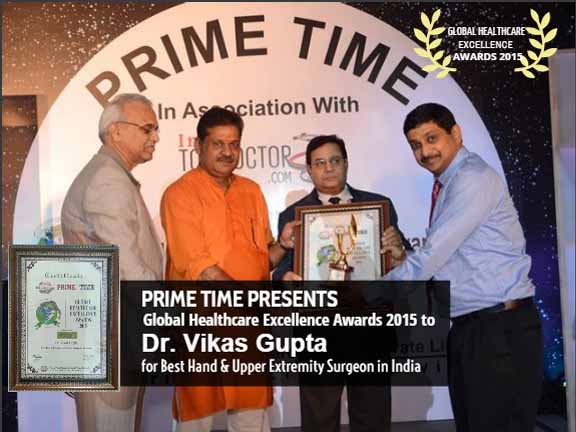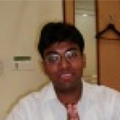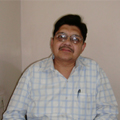Reconstructive and Distinguished Shoulder Surgeon
Comprising of three bones:
It is made of the clavicle (collarbone), the scapula (shoulder blade), and the humerus (upper arm bone). Since the ball of the upper arm is larger than the socket that holds it, shoulder joint is the most movable but unstable joint in the body and to enable it to function properly it is encompassed by muscles, ligaments and tendons.
Instability or propinquity of the tissues:
is affected by the excess mobility of the shoulder joint. This feature also makes it susceptible to many common injuries and disorders which result in pain, numbness and loss of movement in the arm and shoulder area. The common problems enacted upon by the shoulder surgeon are fractures, dislocations, arthritis, frozen shoulder, rotator cuff tears, labrum tears or shoulder impingement.
By over the edge and new modality techniques:
Shoulder surgeon undertakes to repair, restore, rejuvenate the affected shoulder joint and skillfully provides relief to the patient. By a combination of conservative, therapy sessions and minimal as well as complex surgical techniques the debilitation in the shoulder is sought to be removed as effectively and painlessly as possible.
OPD Hours
An insight into Dr. Vikas’s professional profile:
Founder of the Hand2shoulder clinic Dr. Vikas Gupta is an MBBS from All India Institute of Medical Sciences, New Delhi and an MS in Orthopedics from All India Institute of Medical Sciences, New Delhi too. Having completed intensive surgical training from USA and Germany, he is in the field of upper extremity for the past 25 years. He is credited as the first surgeon to introduce many new and international techniques to India in his field. More than 6000 surgeries have made him distinctive and he is considered to be one of the most skilled and stable hands to perform any complex surgery.

Hand2Shoulder Clinic on National Geographic
Case operated by Dr. Vikas Gupta covered by National Geographic Team for serial "Emergency Room". This video highlights careless attitude can lead to grievous injuries which can lead to permanent disability and these if treated properly on time can bring back person towards normal life.....
What they say about us!
Non-Surgical Techniques:
The shoulder surgeon initially begins the treatment with conservative techniques like prescribing anti inflammatory medicines and steroid injections thereafter fused in with physical therapy exercises to enable the patient to restore movements. If these non surgical techniques then the surgeon moves on to the best technique applicable as per the debilitating condition of the affected area in the shoulder.
Platelet Rich Plasma Therapy:
Non surgical and relatively new this technique is completed in only 20 minutes. After careful examination, the surgeon determines whether the patient is suitable for this treatment or not. If yes, then the surgeon inserts an injection in the affected joint, rich with platelet rich plasma that starts healing after a few weeks.
Shoulder Arthroscopy:
With 2 minimal cuts (1/4th inch) an Arthroscope (a very small fibre optic instrument made of lens and video camera) and tools ( 3 to 4 mm in diameter ) are inserted into the affected joint area and treated by the shoulder surgeon effectively. Arthroscopy is taken up when conservative treatment techniques and therapy have proved inefficient to heal the damage. It results in faster healing and less traumatic than an open surgery.
Total Shoulder Replacement:
Patients suffering from arthritis, degenerative joint disease, rotator cuff tears or severe fractures sometimes lose their ability to move the shoulder joint and suffer from extremely unnerving pain. To enable them to restore lost movements and relieve them of pain the shoulder replacement technique or Arthroplasty is adopted by the surgeon whereby the damaged ball and socket joint is replaced and an artificial joint is cemented in.
Reverse Shoulder Replacement:
In cases of severe rotator cuff tears, arthritis or failure of previous shoulder replacement, reverse shoulder replacement surgery is undertaken by the surgeon where natural joint is replaced by prosthetic joint to relieve the patient of the enervating condition. In reverse shoulder replacement surgery, the socket is attached to upper arm bone and metal ball attached to shoulder bone thus allowing the patient to work with deltoid muscle instead of torn rotator cuff.
Stemmed Hemiarthroplasty Technique:
Under this technique the surgeon only replaces the damaged ball of the socket with a metal ball and stem. This is undertaken by the surgeon only when the humeral head is damaged but the socket is in normal condition.
Resurfacing Hemiathroplasty:
An alternative technique to the stemmed hemiathroplasty, only the joint surface of the humeral head is replaced by a cap like prosthesis without a stem, under this technique. It is relatively easy and mostly applied to young and highly active patients.
Open Surgical Technique:
To obtain better results than arthroscopy and to treat severe cases that cannot be treated by arthroscopy, open surgery is performed with incisions that are a few inches long. It takes a while longer to heal from open surgical technique as the cuts are deeper than arthroscopy and surgeons only adopt open surgical technique when no other treatment has proved to be effective.
Rotator Cuff Tear:
This is a commonest problem among > 40 years of age. It mainly due degenerative change of tendinous fibres of the rotator cuff muscle at their insertion into the tuberosity with advancing age. It composed of 4 muscle and tendon that surround humerus. Their function is to help in rotating the arm and stabilize the joint.
Shoulder Impingement/Rotator Cuff Tendonitis:
Impingement can be caused when acromion impinge on the rotator cuff and bursa which cause irritation or damage. It is common in young athletes and middle aged people. Young athletes use their arm overhead for swimming, baseball and tennis




